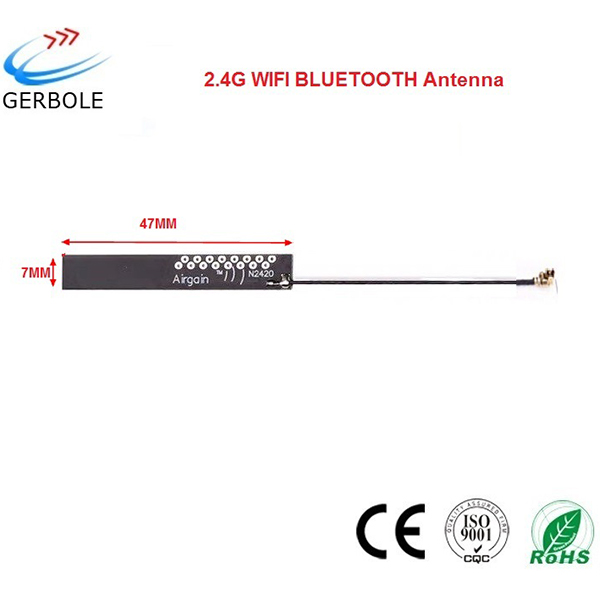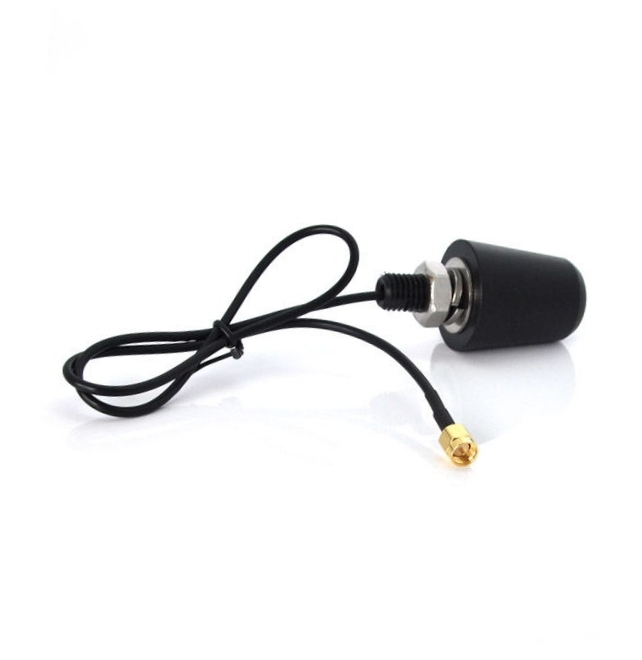RFID (radio frequency identification) is a form of wireless communication that incorporates the use of electromagnetic or electrostatic coupling in the radio frequency portion of the electromagnetic spectrum to uniquely identify an object, animal or person.
Every RFID system consists of three components: a scanning antenna, a transceiver and a transponder. When the scanning antenna and transceiver are combined, they are referred to as an RFID reader or interrogator. There are two types of RFID readers -- fixed readers and mobile readers. The RFID reader is a network-connected device that can be portable or permanently attached. It uses radio waves to transmit signals that activate the tag. Once activated, the tag sends a wave back to the antenna, where it is translated into data. 4g Dongle Antenna

The transponder is in the RFID tag itself. The read range for RFID tags varies based on factors including the type of tag, type of reader, RFID frequency and interference in the surrounding environment or from other RFID tags and readers. Tags that have a stronger power source also have a longer read range.
RFID tags are made up of an integrated circuit (IC), an antenna and a substrate. The part of an RFID tag that encodes identifying information is called the RFID inlay.
There are two main types of RFID tags:
There are also semi-passive RFID tags, meaning a battery runs the circuitry while communication is powered by the RFID reader.
Low-power, embedded non-volatile memory plays an important role in every RFID system. RFID tags typically hold less than 2,000 KB of data, including a unique identifier/serial number. Tags can be read-only or read-write, where data can be added by the reader or existing data overwritten.
The read range for RFID tags varies based on factors including type of tag, type of reader, RFID frequency, and interference in the surrounding environment or from other RFID tags and readers. Active RFID tags have a longer read range than passive RFID tags due to the stronger power source.
smart labels are simple RFID tags. These labels have an RFID tag embedded into an adhesive label and feature a barcode. They can also be used by both RFID and barcode readers. Smart labels can be printed on-demand using desktop printers, where RFID tags require more advanced equipment.
There are three main types of RFID systems: low frequency (LF), high frequency (HF) and ultra-high frequency (UHF). Microwave RFID is also available. Frequencies vary greatly by country and region.
The frequency used will depend on the RFID application, with actual obtained distances sometimes varying from what is expected. For example, when the U.S. State Department announced it would issue electronic passports enabled with an RFID chip, it said the chips would only be able to be read from approximately 4 inches away. However, the State Department soon received evidence that RFID readers could skim the information from the RFID tags from much farther than 4 inches -- sometimes upward of 33 feet away.
If longer read ranges are needed, using tags with additional power can boost read ranges to 300-plus feet.
RFID dates back to the 1940s; however, it was used more frequently in the 1970s. For a long time, the high cost of the tags and readers prohibited widespread commercial use. As hardware costs have decreased, RFID adoption has also increased.
Some common uses for RFID applications include:
Using RFID as an alternative for barcodes is increasing in use. RFID and barcode technologies are used in similar ways to track inventory, but there are some important differences between them.
Near-field communication (NFC) enables data to be exchanged between devices by using short-range, high-frequency wireless communication technology. NFC combines the interface of a smart card and reader into a single device.
RFID is prone to two main issues:
A common RFID security or privacy concern is that RFID tag data can be read by anyone with a compatible reader. Tags can often be read after an item leaves a store or supply chain. They can also be read without a user's knowledge using unauthorized readers, and if a tag has a unique serial number, it can be associated to a consumer. While a privacy concern for individuals, in military or medical settings this can be a national security concern or life-or-death matter.
Because RFID tags do not have a lot of compute power, they are unable to accommodate encryption, such as might be used in a challenge-response authentication system. One exception to this, however, is specific to RFID tags used in passports -- basic access control (BAC). Here, the chip has sufficient compute power to decode an encrypted token from the reader, thus proving the validity of the reader.
At the reader, information printed on the passport is machine-scanned and used to derive a key for the passport. There are three pieces of information used -- the passport number, the passport holder's birth date and the passport's expiration date -- along with a checksum digit for each of the three.
Researchers say this means passports are protected by a password with considerably less entropy than is normally used in e-commerce. They key is also static for the life of the passport, so once an entity has had one-time access to the printed key information, the passport is readable with or without the consent of the passport bearer until the passport expires.
The U.S. State Department, which adopted the BAC system in 2007, has added an anti-skimming material to electronic passports to mitigate the threat of undetected attempts to steal users' personal information.
There are several guidelines and specifications for RFID technology, but the main standards organizations are:
Each radio frequency has associated standards, including ISO 14223 and ISO/IEC 18000-2 for LF RFID, ISO 15693 and ISO/IEC 14443 for HF RFID, and ISO 18000-6C for UHF RFID.
RFID systems are becoming increasingly used to support internet of things deployments. Combining the technology with smart sensors and/or GPS technology enables sensor data including temperature, movement and location to be wirelessly transmitted.
Corporate data privacy advocates said that a federal law could provide businesses with consistency and help facilitate future ...
Get the lowdown on the major features, differentiators, strengths and weaknesses of the blockchain platforms getting the most ...
Google has agreed to make changes to its app store, while Apple has remained largely unscathed after antitrust trials challenged ...
Communication is critical to an effective incident response plan. Here are five best practices for communication planning and a ...
Cyberattacks are more varied and numerous than ever. Learn the key signs of common security incidents and how to respond to keep ...
Volexity reported the vulnerabilities to Ivanti after discovering that suspected Chinese nation-state threat actors created an ...
While networking is the main driver of HPE's plan to acquire Juniper Networks, security is a big part of the strategy as well.
With its blockbuster acquisition of Juniper Networks, HPE gains more data center networking and AI technologies as well as other ...
HPE plans to use Juniper's hardware and software to make networking a 'core business and architecture foundation' for HPE's ...
Companies are quickly adopting generative AI, and with this, the focus has shifted toward hybrid cloud environments, which spans ...
DCIM tools can improve data center management and operation. Learn how six prominent products can help organizations control ...
Quantum computing may be years away from practical enterprise applications, but it's getting closer. We talked with IBM's quantum...
Data governance software can help organizations manage governance programs. Here's a look at the key features and capabilities of...
Experts identify 12 top data observability use cases and examine how they influence all aspects of data management and governance...
Big data is driving changes in how organizations process, store and analyze data. The benefits are spurring even more innovation....

4g Home Signal Booster All Rights Reserved, Copyright 2005 - 2024, TechTarget Privacy Policy Cookie Preferences Cookie Preferences Do Not Sell or Share My Personal Information